Welcome to MATT CHATS, a weekly interview series in which I, Matt O’Keefe, talk with people of interest in the comic book industry. Whether they’re writers, artists, letterers, editors, retailers, etc. if they have something to say, I want to hear it and share it with you. Here’s a special conversation I had recently with webcomics maven Scott Kurtz.
Scott Kurtz is one of the original webcomic pioneers, having created PvP (Player vs. Player) nearly seventeen years ago and making a living writing and drawing it for almost as long. He eventually launched a spinoff of PvP named Table Titans about friends playing a role playing game that’s taken on a life and legacy of its own. I spoke with Kurtz about the huge-and-still-growing webcomic series, the role the owners of Dungeons and Dragons have in the comic, building an online empire and more.
What were your initial hopes for Table Titans creatively, professionally and personally?
My hope with Table Titans was to create a comic book that captured the spirit and joy of tabletop roleplaying. I’ve personally wanted to make a fantasy comic for many years, and after a reader survey revealed many of our fans were into tabletop gaming, it seemed a perfect topic. We’ve been telling stories for years at our kitchen table that nobody but our gaming group is aware of. What an amazing opportunity to tell them to a wider audience and simultaneously encourage them to tell their own stories collaboratively with friends.
How do those hopes compare to where you are now?
All of our hopes with Table Titans have been fulfilled and exceeded. The comic is doing gangbusters. In only two years it has the same traffic as PvP on days we post new strips. That’s more than we could have ever hoped for. And every email, and fan interaction at cons involves someone telling us how they started playing D&D because of the strip or one of our podcasts about gaming.
You brought Steve Hamaker on to color Table Titans, but choose to leave the pages black & white when he’s unavailable. What brought about that choice?
Steve is always available. It’s just that sometimes I’m late getting pages in to him where it works inside his schedule. So on those days, we run in black and white and then once Steve gets the time to color them we pop them up. It’s my problem. Steve is a monster.
How did the collaboration with Wizards of the Coast on Table Titans come about?
We had an existing relationship with Wizards from our D&D podcasts and live shows we do with Penny Arcade. So we talk all the time. And we ran the idea of Table Titans past them at the early stages of outlining the comic. They loved the idea and we talked to them about the possibility of working in a marketing partnership with them on it. They promote the comic, the comic promotes D&D. Win-win, right?
Do you have to jump through many hoops to use their characters and concepts?
Not really. We’re not an official Licensee. It’s a marketing partnership. So they’re very hands off. There are a lot of things I can put in the comic that, while are a part of D&D, aren’t owned by Wizards. Orcs, Elves, Dwarves, Dragons, Goblins, Clerics, Fighters, etc. I just don’t get in trouble when I drop in something they do own like the drow or a beholder or displacer beast.
How involved is Wizards of the Coast in the storylines in Table Titans?
Not terribly. We talk all the time about what they have coming up as far as their campaign settings and if it interests us from a story level, we get to incorporate it into the comic. Season one of the comic centered around their campaign to reintroduce the idea of D&D as a collaborative storytelling exercise. We focused on that theme quite a bit. And season two lined up with their “sundering” campaign (sort of). So we see what they’re doing and if it ignites an idea we run with it. But these are our stories. They’re very hands off.
What are the big benefits of getting to use the Dungeons & Dragons content in Table Titans?
The biggest benefit is that we’re associated with Wizards of the Coast and they promote the strip on their social media sites. We’ve also worked with them collaboratively on a couple of non-comic projects. We’ve jointly made a beholder dice bag and a vinyl figure of our main character Val standing triumphant over a beholder. Those projects are a lot of fun. Plus I grew up playing D&D and so it’s the game I want reflected in the comic. I could have just made up a fake game they were playing, but how great is it that they get to play D&D. Just like we all do?
Are there ever times you wish you were using creator-owned characters and setting instead?
All of Table Titans is creator owned. We own everything we create. Sure if we drop in a displacer beast or a drow (as we have done in the two years we’ve produced the strip), Wizards owns those characters. But it’s worth creating an antagonist from the pages of the offical Monster Manual for our characters to go up against. And in the end, we own Table Titans. We’re also currently working on our own campaign setting which we’ll be featuring in the strip in upcoming seasons. We wanted to show the natural progression players take. Season 1 was D&D encounter groups (what you do when you’re learning). Season 2 is a purchased campaign setting. Season 3 and beyond will show the Titans playing their own home-brew setting. And in the real world, we’ll be building that setting ourselves.
How business minded would you say a lot of your creative decisions are?
It’s impossible not to be business minded about all the decisions you make. But at Toonhound Studios, we make what we love and find a way to monetize it afterwards. We try not to put the cart before the horse. I’ve also been lucky to have found a business partner in Cory Casoni (formerly the marketing director at Oni Press, currently the Director of Business Development & Brand Management at Toonhound Studios LLC). Cory came on board about 3 years ago and we’ve been building Toonhound Studios into an American Mangaka. That’s why we work with so many talented people on all of our projects like Dylan Meconis, Brian Hurtt, Tavis Maiden and Steve Hamaker. We’re trying to build the independent publisher of the future here. And having a ball doing it.
Are you setting out to build a webcomics empire, or is it happening organically?
It’s happening organically. And it’s nothing that I had any interest in until I hired Cory. His first couple of years were spent undoing all the mistakes I made on my own over the first 15 years of my career. HA HA!. Then once all the old business was settled we sat down and said “What’s next?” Honestly, I handn’t thought much past “I want to be a cartoonist.” So that’s been a difficult but exciting and challenging question to try to answer. We are always trying to remain fluid and lean and ready to adapt. Things change so fast in this industry. We always want to be creating new content and trying things that challenge us and scare us a little bit. So yes we have plans. But to say we’re trying to build an “empire” is a little far reaching I think.
You eventually stepped away from The Trenches, and helped bring in and guide the new artists on the series. Would you ever do that with Table Titans one day?
We’re already doing it. Brian Hurtt will be taking over drawing duties on Table Titans for the next season. He’ll be writing and drawing a story with a side group called the Dungeon Dogs. Meanwhile I’ll be busy drawing the next Table Titans adventure and we’ll move the comic from posting 2 days a week to 4. Tavis Maiden (tenkoking.com) is also working on a new project with me that takes place in the Table Titans universe that’s so crazy and hilarious It’s hard not to talk about it. And I’m writing PvP now with Dylan Meconis, so everything at Toonhound is a group effort. Working collaboratively is my next step as a cartoonist and it’s making all of our work better across the board. Hands down.
How do you see Table Titans (and PvP) evolving as time goes on?
Who knows. I’m equally nervous and excited about it. I just turned 44 and PvP is turning 17 in May. I don’t see myself ever stopping either strip. I love making them so much. I still love writing and drawing PvP after over a decade and a half. I want to join my heroes Stan Sakai, and Sergio Aragones in celebrating 20 and 30 years of making the comic. Same goes for Table Titans. I can definitely see myself creating new comics and characters and working with others to carry on PvP and Table Titans with my guidance while I work on other things. Another hero of mine is Jim Davis and he built an amarican Mangaka at PAWS. A lot of people give him shit about that or look down on him for it. But they respect and honor Miyazaki for working the same way. Makes no sense to me, but it’s all cultrual. I know the benefits of collaboration and I intend to do more of it as my career continues.
You can find Scott on Twitter and his simply excellent podcast Surviving Creativity. Check out Table Titans if you know what’s good for you.



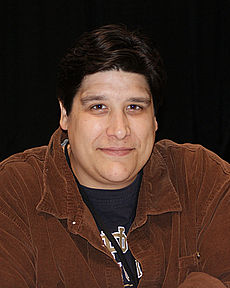
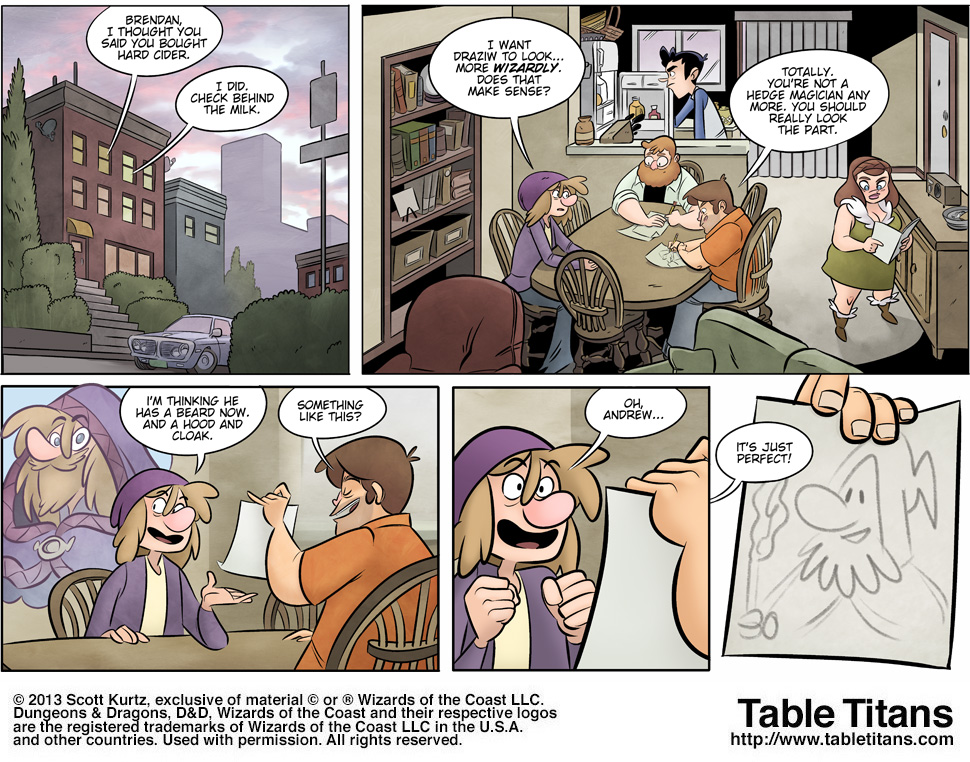



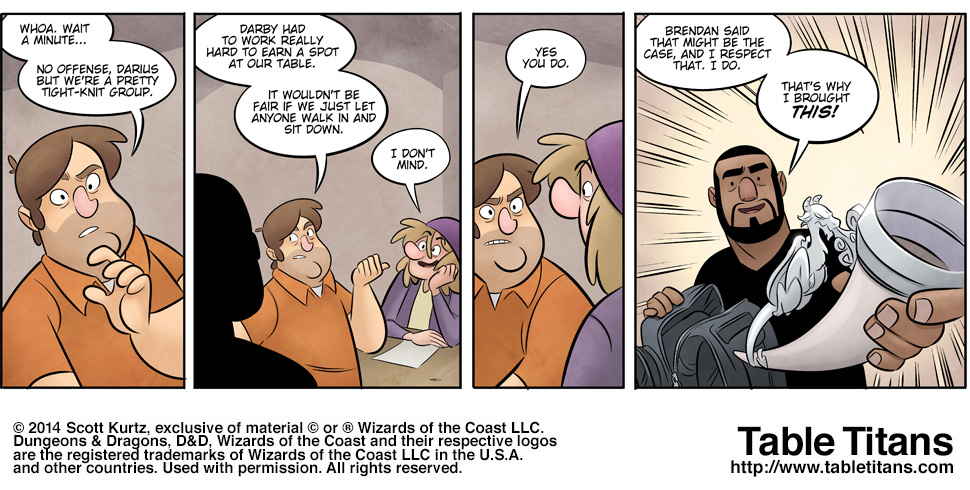
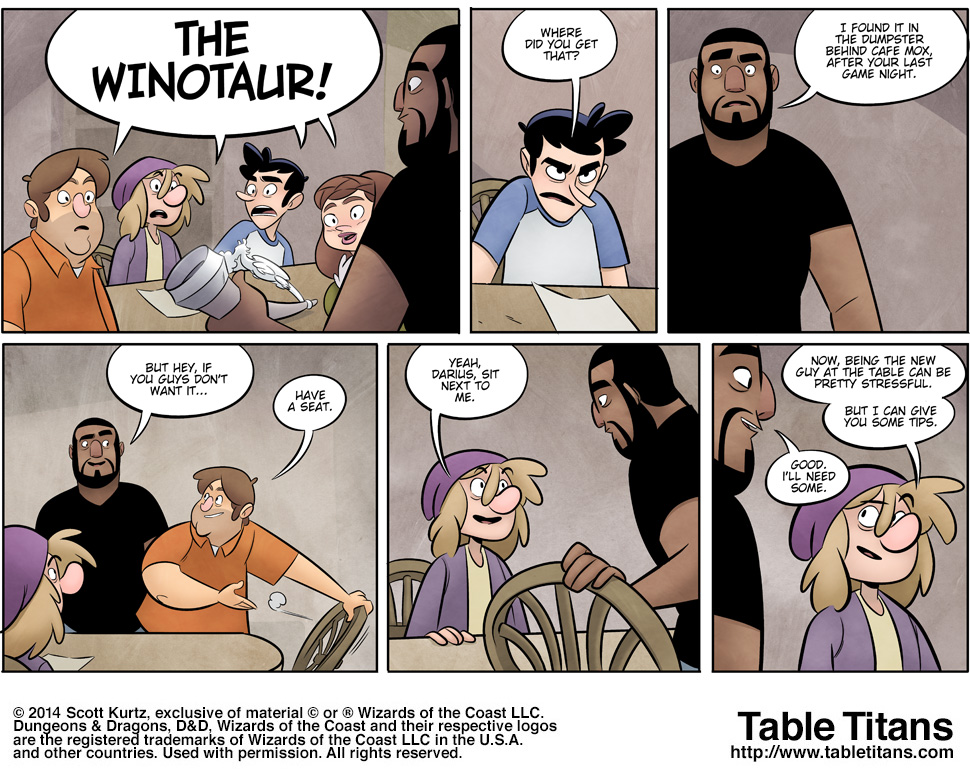
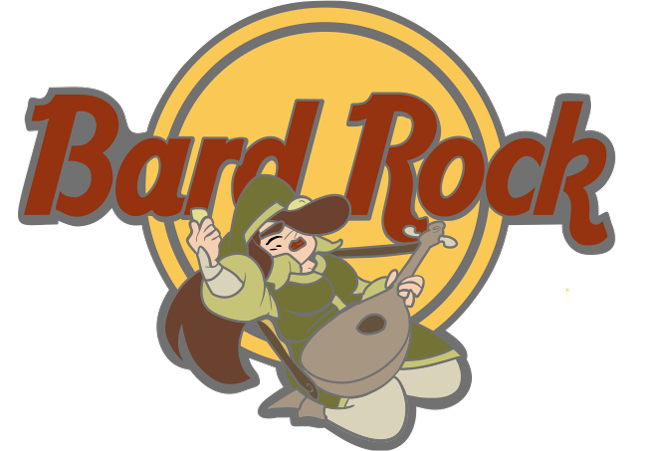

There is not one price for all print comics, it’s silly to think there is one best price for digital. Both Waid and Ross have strategies that work for them. Waid is making his content fit the price he wants to charge. Ross has a set amount of content and has to price accordingly. Neither is wrong, they are just different.
The streaming vs downloading issue is probably keeping more people away that the price. Even 99 cents is too much if you don’t trust the content to stick around.
I would never pay anything for a digital comic. I honestly don’t understand the logic in anybody paying more than pennies even.
We used to have the price raised on comics and the high cost of paper was blamed. Then then the high cost of gas to transport them was blamed. Digital readers shouldn’t be paying paper and gas rates when neither exist.
Waid is right…the print market is doomed long term…there is no “if”…it is doomed…and people need to accept that in thirty years we aren’t going to be cutting down trees for 99% of books…so let’s be honest here and realize that the future is not the comic book store…the future is either DC > consumer or artist > consumer with maybe an Apple or Amazon as the distributor…so the idea of digital propping up paper is silly…and people simply aren’t going to pay $3.99 for a two minute read…it’s that simple…so either charge a fair price ($0.99) or drive people to piracy.
I’d have paid $70 to read DMZ…$210? or $280? Forget it.
Print media isn’t dying, just bad print media. My ma apparently subscribes to Guideposts magazine, cheesy christian stuff. They sell more copies in a quarter than every issue of every Marvel and DC and Image and IDW and Boom and Dark Horse title combined. COMBINED.
Comic books and newspapers are suffering because they are run by cheapskates and mobsters. Real print media is doing fine, if not increasingly better.
For older material, even twenty five cents is too much.
One thing to consider here is the Pokemon effect. I’m sure there is a price point most readers will convince themselves that have to have them all.
We’ll see how Waid does when he actually tries to start charging. The chapters of the free comic he’s putting up seem to be the story equivalent of 5-7 pages of a print comic, so if that’s what he think he can charge 99 cents for than his prices are pretty much the same as the $3/$4 that most print publishers charge for same day releases (and they mostly drop those prices after a month). I wouldn’t pay that much for that little.
I think Top Shelf has a better idea, publish real substantial books and charge a fair price for them, far below the print price but more than 99 cents in most cases. Not that I’m a huge market, but about half of the $50 I’ve spent on digital comics since I got an ipad 3 months ago has been on Top Shelf books.
And free sounds about right for Scott Kurtz comics. Maybe a bit high.
Dark Horse has a great price structure with their “bundles”. Most are a little more than $1 an issue when you buy a 5 issue arc. On Comixology I ONLY buy sale items at $.99. I suppose I would spend more for a few titles or writers but it makes NO sense to spend print prices or even half. I use to support my local shop but they just closed. I’m going strictly digital now and $.99 is plenty.
Digital Comics are not using their greatest advantage in that they can give comics NOW as soon as it’s done. No waiting for the printer. NO waiting for Wednesday. We want our books NOW.
As for pricing, they should pass the savings of not using paper to the buyer. My shop gives me a 15% discount and digital should also match that.
I can only speak for my own experience, but:
I simply will not pay print prices for digital books.
$1.99 seems to be my upper limit for regular issues. Don’t like to wait a month for a price drop, but I’ll do it. (I ended up skipping the Valiant reboot because their dropped prices are still $2.99, and I don’t buy any Marvel books digitally because though their prices will drop to $1.99, there is no schedule to this that will allow my to regularly follow a series.)
For $0.99, though, I’ll pretty much buy as much as I can read. Often more.
Especially where services such as Comixology are concerned, I would never pay squat for a digital comic.* You are not buying a copy of the comic, you are paying for a license to view a copy of the comic, a license which can be revoked at any time at Comixology’s discretion, and which disappears in to thin air as soon as Comixology goes out of business. Print will never die because people like me want to OWN what they are paying for, not just pretend they do.
* The only digital comics I’ve bought were from Kickstarter projects, where the bidding level included a DRM-free PDF file at a very reasonable price compared to the expensive print format.
It is interesting to see what wasn’t brought up by the panel (or wasn’t reported) and what isn’t being brought up in the comments. Namely, how much of the price point is shaped by the costs of producing the comics. You know, paying the writer. artists, writer/artists, whatever.
One could guess that from Waid’s perspective, a mix of ad revenue and volume will be how creators are paid. For Kurtz, as a single creator, the cost of those man-hours is reduced down to paying one person. For the publishers, though, they are thinking of their own revenue as well as what they have to pay the creators. For all the talk of not wanting to pay a print price point for digital, no one in the comments is thinking of the creator. The only thought is eliminating print and its costs somehow makes the comics free or nearly so.
As someone who has and hopes to continue earning money from my creative efforts, I find that attitude worrying.
In the case of single issues, one of the big obstacles is Apple. Demanding that all in app purchases have a price ending in .99 prevents the pubs from doing as much experimentation as they might want to find a sweet spot (not a big deal with Top Shelf, but problematic when .99 is too low for the pub and 1.99 is too high.). Everyone’s reliance on Comixology is an issue too…I don’t know what their cut is, but if it’s over ten percent it may make .99 comics a difficult proposition for a $3 cover price item. I wish more pubs would break out of the Comixology ecosystem…but then IDW tried going solo and ended up with CX anyway, and I have actually seen people say they won’t do DH or Viz because they’re unwilling to work with multiple libraries in different apps.
Chris Ross replied “I think the one thing we keep coming to as far as the 99 cents, is Angry Birds. That’s the thing that said you can get hours and hours of entertainment for only a dollar. So when you purchase a comic or you purchase a graphic novel, if it’s anything that takes you an hour or two, you feel that if you pay $4 for it you just got screwed.”
Sums up my feelings exactly regardless if it’s print or digital. The serial format of most stories don’t provide enough bang for my buck when compared to other forms of entertainment like games, novels, or even overpriced feature films. Take TDKR. I’ll likely pay 7 bucks for over 2 hours of entertainment whereas $7 won’t even by me two issues of a top-tier comic. Sure, I can reread my comic but why would I if the content is so brief that the experience is negligible.
“For all the talk of not wanting to pay a print price point for digital, no one in the comments is thinking of the creator. The only thought is eliminating print and its costs somehow makes the comics free or nearly so.”
Not that frankly ridiculous argument again. Nobody says digital comics don’t have costs–the fact is that print comics have costs for creative, printing/shipping and distribution. Digital comics have creative and distribution. That’s less.
Add to that that you get less for it as well–access rather than ownership, no option to re-sell–and the purchase of a digital comic is fundamentally different from that of a print object.
While 99 cents is the most I’ve paid for a digital comic, I can see instances where the pricing will be different. Take Dark Horses’ bundles for example. A Hellboy mini digitally will cost the same as a printed Annual. That’s about $1.50 an issue for 3 issue mini. DC drops the price of their titles by a dollar a month after they’ve been on sale. Most of the books are 20 page $2.99 products. That’s 10 pages for a dollar. It seems nice but overall is slight. Another major factor is that most books are written for the trade. Decompressed storytelling in comics doesn’t lend itself well to impulse buys or random try outs. I think digital comics will have to look at comics past to advance in it’s future. Following the basic rules of newspaper strips – limited number of panels/ space to tell a compressed, full bodied story will be the way to go. By following in the footsteps of newspaper comic strips, creators could develop a working schedule that changes their “shipping” schedule from monthly to bi-weekly or even weekly. Publishers have to view most casual/ new readers as people looking for an “one night stand”. They aren’t looking for a commitment. Trying to hook them with ongoings makes things harder. Instead of trying to push out a ridiculous number of ongoings only for them to cancelled because they couldn’t “find an audience”, try the Hellboy/ B.P.R.D. Mini series model. Do more one shots digitally. Then for digital bundles/ paperback/ hardcover collections, you can group the minis and one shots more neatly, making it easier for new and current readers to find and buy in any format they may choose.